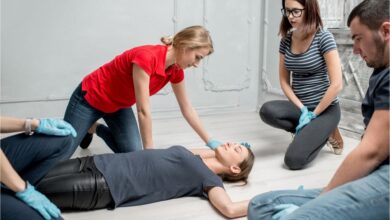Supporting Children & Teens With Social Anxiety Disorder

Anxiety amongst schoolchildren is a common and serious issue many parents and guardians face. However, it can come across as different symptoms and forms such as generalized anxiety disorder or post-traumatic stress disorder. Social anxiety disorder, or SAD, is especially common and has affected more people over the past years due to stressful conditions in education created by the recent COVID-19 pandemic.
Thankfully, social anxiety disorder is a manageable condition that does not have to interfere with a child or teen’s life. They do not have to see themselves as doomed to live a life of isolation, underachievement and anxiety. The infographic below provides numerous coping strategies for children with SAD and should be mandatory reading for students, their loved ones and school faculty.
Acknowledging Anxiety
As true for a majority of mental and physical conditions, the first step in managing SAD is to recognize the problem. People suffering with anxiety may feel embarrassed or reluctant to admit there is an issue in the first place. However, the sooner a person acknowledges it, the sooner they can receive the correct help and support they need. If you think there is a student or child in your life that is struggling with anxiety, some experts suggest the best approach is to reassure them that anxiety is a common obstacle that many have overcome, and most importantly, help is available.
Take It Slow & Steady
The biggest component when it comes to dealing with social anxiety disorder is to take it one step at a time. There is no trophy at the finish line for those who speed through the steps of healing and managing anxiety. Remind children and teens that it’s not important if they’re friends with half of their classmates by the end of the first week of school. Instead, focus on cultivating one solid friendship at a time.
Additionally, don’t pressure students into taking a full course load filled with long lectures and challenging AP classes. It can do more harm than good. Instead, have students sign up for a few smaller classes or opt for online learning. Attending class remotely allows students to interact with their classmates and teachers within the safety of their home. Once they’ve built confidence, students can than consider taking an in-person course. Practice makes perfect!
To learn more about social anxiety disorder and how schoolchildren can stop it from interfering with their personal and educational development, look over the infographic created by The American Academy, experts for those seeking an online high school diploma.



